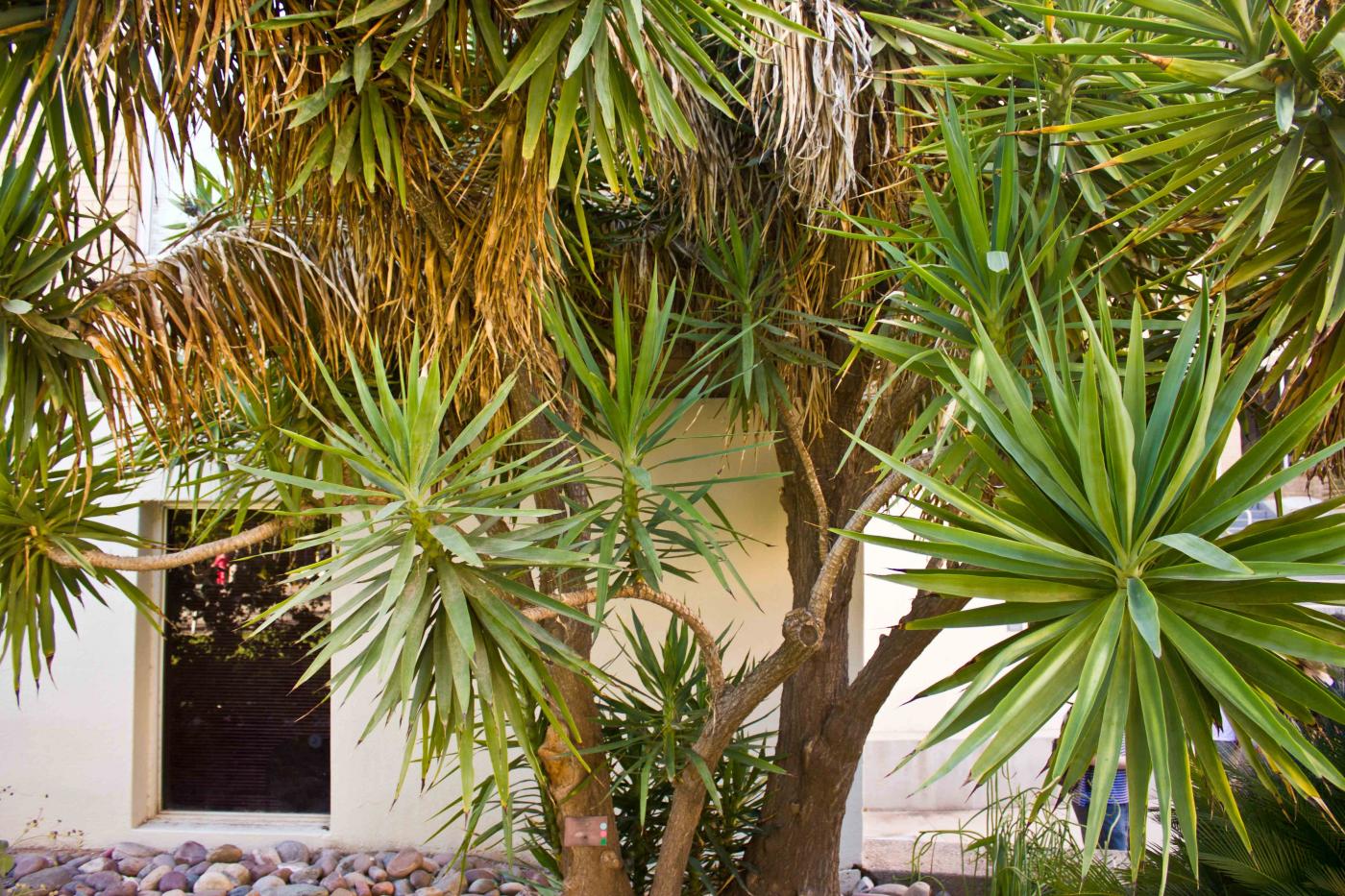Yucca
|
Family: Asparagaceae |
Plants perennial, acaulescent or caulescent, sometimes subscapose, sometimes arborescent, usually branching extensively, from woody, subterranean or aboveground caudices, or single stems. Leaves sessile, in rosettes on caudices or at branch ends; blade linear-lanceolate, expanded basally, usually rigid, occasionally fleshy, margins entire or denticulate, often filiferous and separating into elongated fibers, corneous, apex mostly sharp-pointed. Scape, when present, usually less than 2.5 cm diam. Inflorescences erect or rarely pendent, paniculate or racemose, sometimes paniculate proximally and racemose distally, bracteate, occasionally pubescent; bracts ascending, erect, or rarely reflexed; peduncle sometimes scapelike, sometimes extending beyond leaves, sometimes pubescent. Flowers bisexual; perianth campanulate or globose; tepals 6, similar, fleshy, distinct to or connate at base, whitish to cream or tinged slightly with green or purple, occasionally pubescent; stamens 6; filaments flattened, as wide as anthers, smooth, papillose, or granular, fleshy; pistil obovoid or oblong-cylindrical; ovary superior, usually green, 3-locular or 6-locular with false septa, 6-lobed; style white to dark green, often thick; stigmas usually 3, sometimes 1 and subcapitate, white to pale green, 1-2 mm. Fruits erect or pendent, capsular or baccate. Seeds many per locule, usually black, occasionally gray, flattened, round, rarely obovate or ovate. x = 25, 30. W. Trelease (1902) recognized Hesperoyucca, Clistoyucca, and Samuela as segregates from, but closely related to, Yucca. S. D. McKelvey (1938-1947) returned them to Yucca, recognizing sections Hesperoyucca and Clistoyucca, and placing Samuela in section Sarcocarpa. However, McKelvey indicated that there is ample justification for recognizing Hesperoyucca at genus level, 'since a number of flower and fruit characters differ from those in all other sections.' Recent DNA evidence provides strong support for separate recognition of Hesperoyucca (M. A. Hanson 1993; D. J. Bogler 1994; D. J. Bogler and B. B. Simpson 1995, 1996; K. H. Clary 1997). Clary´s data indicate that it is more closely related to Hesperaloe than to Yucca, and that Clistoyucca and Samuela should be retained in Yucca. Yuccas are often cultivated in many places in the United States, particularly in the south. They are not easily identified, particularly in herbarium specimens, and collectors should be certain to record information about the habits and sizes of plants, and the colors of ovaries, styles, and stigmas. If possible, field photographs of the pistil and stamens should accompany the specimens.
|

